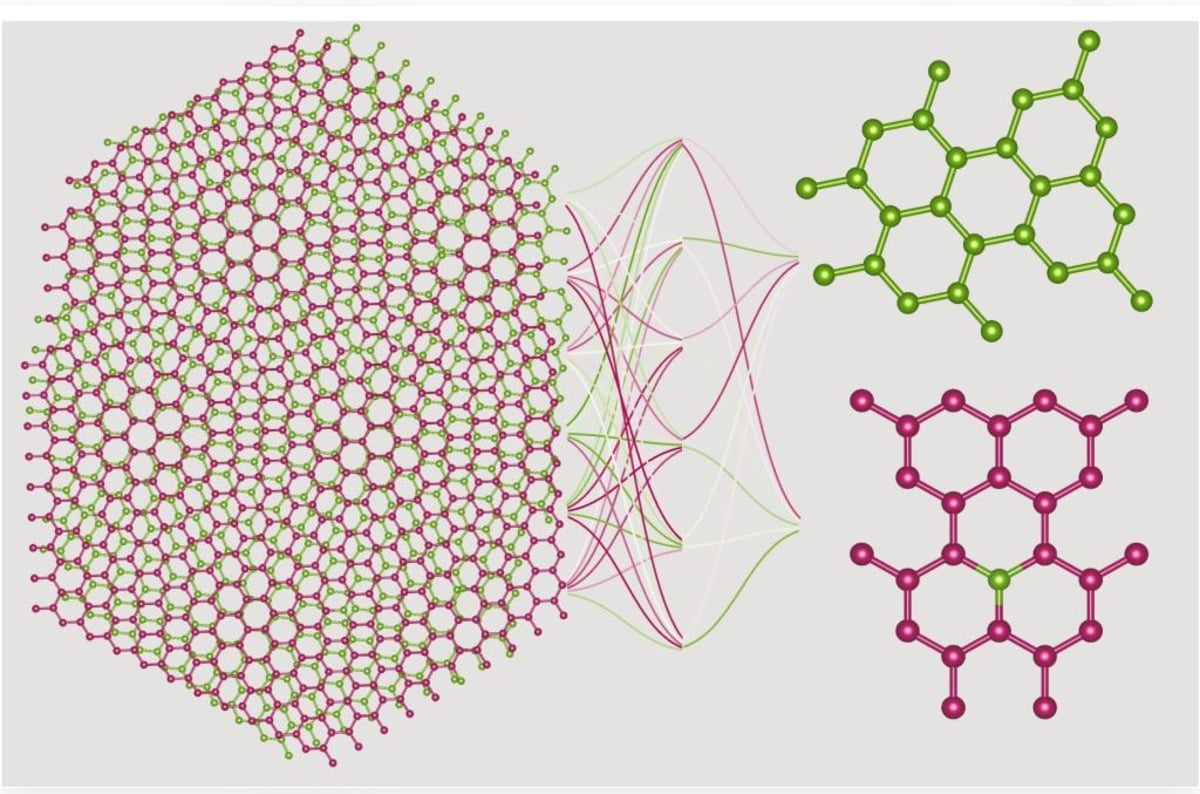Scientists at the Oak Ridge National Laboratory (ORNL) and the University of Tennessee, Knoxville, have unveiled a groundbreaking method for visualizing and analyzing the atomic structures of moiré materials. This innovative approach could significantly impact fields such as quantum computing and advanced electronics, where the unique properties of these two-dimensional materials are of great interest.
The research, led by ORNL scientist Sumner Harris, introduced a neural network-based technique known as Gomb-Net. This method enables researchers to identify dopant atoms within the intricate moiré patterns formed when two layers of materials are stacked at precise angles. The findings challenge existing theoretical models by demonstrating that the position of atoms within the moiré structure does not influence the ease of atom substitution.
Gomb-Net is designed to operate on standard personal computers, facilitating real-time analysis for electron microscopes. This accessibility allows for broader application and faster results in the study of these materials.
In their study, the team focused on a twisted stack of tungsten disulfide monolayers, which they doped with selenium to investigate the distribution of atoms within the moiré patterns. The goal was to modify the electronic and optical properties of the materials, which could lead to advancements in semiconductor technology, lasers, LED lighting, and quantum computing devices.
Significance of the Research
The research, published in the journal Nano Letters, was funded by the Department of Energy’s (DOE) Basic Energy Sciences program. The implications of this work extend beyond theoretical interest; it may pave the way for the development of more efficient electronic components and devices, which are crucial for the future of technology.
The potential applications of moiré materials are vast, particularly in the realm of quantum computing. The ability to manipulate atomic structures with precision can lead to the creation of more powerful and efficient quantum devices, which could revolutionize computing as we know it.
This breakthrough adds to the growing body of research aimed at harnessing the unique properties of two-dimensional materials. As scientists continue to explore the capabilities of moiré materials, the integration of machine learning techniques like Gomb-Net will likely play a pivotal role in unlocking new functionalities and applications.
In conclusion, the collaboration between ORNL and the University of Tennessee marks a significant step forward in the field of materials science. The use of machine learning to analyze moiré materials not only enhances our understanding of their atomic structures but also opens the door to future innovations in technology.






































































